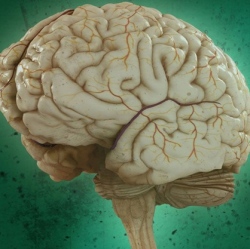
New research from Case Western Reserve University and University of Toronto neuroscientists finds that the brains of autistic children generate more information at rest,a 42% increase on average. The study offers a scientific explanation for the most typical characteristic of autism, withdrawal into one’s own inner world.
The excess production of information may explain a child’s detachment from their environment.
Published at the end of December in Frontiers in Neuroinformatics, this study is a follow-up to the authors’ prior finding that brain connections are different in autistic children. This paper determined that the differences account for the increased complexity within their brains.
“Our results suggest that autistic children are not interested in social interactions because their brains generate more information at rest, which we interpret as more introspection in line with early descriptions of the disorder,” said Roberto Fernández Galán, PhD, senior author and associate professor of neurosciences at Case Western Reserve School of Medicine.
The authors quantified information as engineers normally do but instead of applying it to signals in electronic devices, they applied it to brain activity recorded with magnetoencephalography (MEG). They showed that autistic children’s brains at rest generate more information than non-autistic children. This may explain their lack of interest in external stimuli, including interactions with other people.
The researchers also quantified interactions between brain regions, i.e., the brain’s functional connectivity, and determined the inputs to the brain in the resting state allowing them to interpret the children’s introspection level.
“This is a novel interpretation because it is a different attempt to understand the children’s cognition by analyzing their brain activity,” said José L. Pérez Velázquez, PhD, first author and professor of neuroscience at University of Toronto Institute of Medical Science and Department of Pediatrics, Brain and Behavior Center.
“Measuring cognitive processes is not trivial; yet, our findings indicate that this can be done to some extent with well-established mathematical tools from physics and engineering.”
